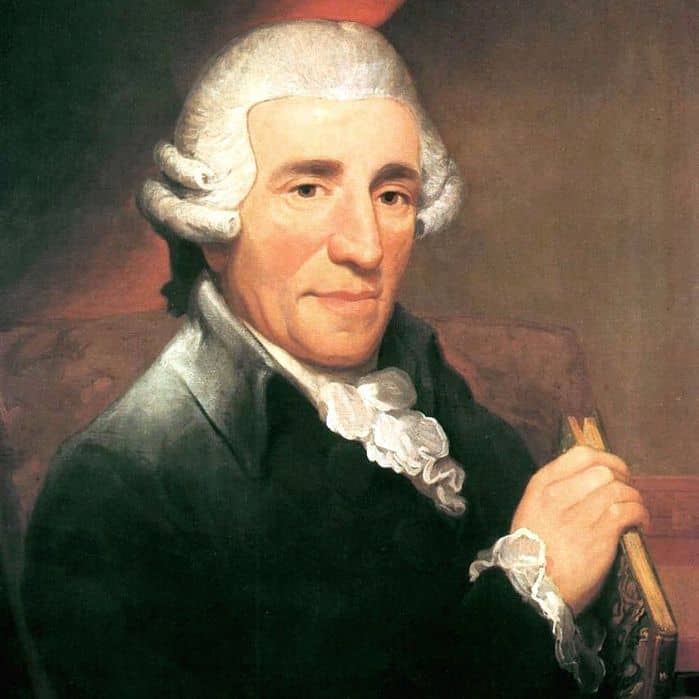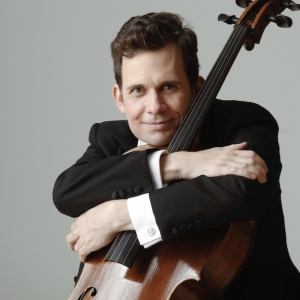
The Origins of Haydn’s Cello Concerto No. 2 in D Major (Part 1 of 2)
Brinton Smith
My research into this topic was inspired by upcoming concerts this weekend with the Houston Symphony. The Saturday January 30th performance is viewable on livestream at 8pm Central time. I am heavily indebted to Thomas Tolley and Dr. George Kenneway, whose groundbreaking research I only survey in this article. Their papers should be read in their entirety for the rich level of background and detail they provide.
Haydn’s 1783 D major cello concerto (Hob VIIb:2) suffered a checkered reception for much of its early history, with aspersions cast both upon its authenticity and its compositional quality. Even when it finally gained popularity among cellists in the late 19th century, it did so in performing editions that significantly altered both its style and substance. The reception of the concerto was further muddled by two other 19th century concerti purported to be by Haydn, a ‘little’ D major concerto Hob VIIb:4, which is spurious, and a C major concerto Hob VIIb:5, compiled from ‘sketches’ by Popper. The dubious nature of those works, combined with the incorrect attribution of Hob VIIb:2 to Anton Kraft and a general critical disdain for the concerti of Haydn relegated the concerto to relative anonymity for nearly a century after it was composed.
Donald Tovey in particular, despite being largely unfamiliar with the majority of Haydn’s concerti, attacked Haydn’s writing in the concerto genre as “clichéd” with “primitive scoring.” Tovey insisted that the concerto was a form in which Haydn “never put forth his full power” and Tovey reserved particular scorn for the relative simplicity of Hob VIIb:2. However, the increased popularity of the concerto among virtuoso cellists, the discovery of an original Haydn manuscript in 1951, and the availability of new performing editions that restore the original version of the concerto have allowed us to see the work in a new light.
New research, published in 2019 by Thomas Tolley building on discoveries of Simon McVeigh, has clarified the origins of the concerto, presenting compelling evidence that it was neither written for nor debuted by Anton Kraft, as was previously assumed. On March 24th, 1784 the London press announced the debut that evening of “‘A new Concerto, Violoncello, Mr Cervetto, composed by Haydn.” (The C major concerto was, at this point, more than twenty years old) The concert series at Hannover Square in London was presented by Willoughby Bertie, 4th Earl of Abingdon, an amateur flautist and composer, who commissioned several new works by Haydn to present during his 1783 and 1784 concert series (No longer ‘new’, the second performance one week later was advertised as ‘Concerto Violoncello, Mr Cervetto, composed by Haydn’.) The soloist of the premiere, James Cervetto (son of noted cellist Jacob Cervetto) was the principal cellist of the Italian Opera in London and one of England’s leading solo cellists. Cervetto the younger was known for his tone and expression ‘equal to the best tenor voices’ as well as his brilliant virtuosity. As one of the early proponents of thumb position (including the use of the fourth finger in thumb position!) he could easily sightread violin parts at pitch when the need arose in chamber music. Haydn did not travel to London for the performances and is likely that the parts used for the premiere and a repeat performance one week later were destroyed to protect Haydn’s rights, as was the case with Abingdon’s other Haydn commissions. Reviews of the concerto’s 1784 debut emphasize how Haydn’s score was ideally matched to Cervetto’s strengths, particularly his expressive cantabile lyricism and florid virtuosity.
Why, then, has this concerto so long been associated with and even ascribed to Haydn’s first cellist at Esterhazy, Anton Kraft? Since the origins of the commission and premiere had until now been lost to history, the concerto required the skill of a top virtuoso, and Haydn and Kraft were both at Esterhazy near the date of composition, it was a reasonable assumption. However it also seems that Nikolaus Kraft, Anton’s son, supplied erroneous information to Gustav Schilling, who published in the 1837 Encyclopädie der gesammten musikalischen Wissenschaften the bold claim that the concerto was actually an early composition of Anton Kraft, submitted to Haydn for review and then inadvertently left among Haydn’s papers and published posthumously as the work of Haydn. We know now that this claim is clearly false and it surely would not have been made had Nikolaus Kraft or Schilling known in 1837 that Haydn’s manuscript still existed, that Haydn himself had inscribed the work into his catalog, or that it was not, in fact, published posthumously, but in 1804. (The André edition bore no date, but has been definitely dated by its plate numbers) It seems unlikely that Nikolaus Kraft, who was nine at the time Anton left Esterhazy and was trained as a cellist by his father, would not know the true origins of the work. The false information he provided Schilling was likely a deliberate attempt to increase the legacy of his deceased father and their Kraft “brand.” Unfortunately, this great lie enmeshed itself to this concerto to such an extent that even to this day -in the face of overwhelming evidence to the contrary- many still imagine that there is some doubt as to its authenticity. Hopefully the newly revealed details of its commission and debut will finally put those rumors to rest.

James Cervetto, taken from ‘Self-portrait of Johan Zoffany with his daughter Maria Theresa, James Cervetto and Giacobbe Cervetto’ at the Yale Center for British Art
In part two, we will examine the impact that the heavily edited performing editions in use when the concerto first gained popularity impacted our modern perceptions of the work.
Bibliography:
David Blum, Casals and the Art of Interpretation (London: Heinemann, 1977)
Burney, General History, volume 4, 669.
Jerome Carrington, Francois Servais’s Manuscripts of the Joseph Haydn D major Cello Concerto, unpublished manuscript (2003), Brotherton Library, University of Leeds, MS 1773.
Gazetteer and New Daily Advertiser (30 March 1784)
Dr. George Kennaway NineteenthCentury Music Review / Volume 9 / Issue 02 / December 2012
SIMON McVEIGH (1989) THE PROFESSIONAL CONCERT AND RIVAL SUBSCRIPTION SERIES IN LONDON, 1783–1793, Royal Musical Association Research Chronicle, 22:1, 1-136, DOI: 10.1080/14723808.1989.10540933
James Cervetto and the Origin of Haydn’s D Major Cello Concerto. / Tolley, Thomas.
In: Eighteenth-Century Music, Vol. 16, No. 1, 14.02.2019, p. 9-29.
Tovey, Donald Essays in Musical Analysis: Concertos (Oxford: Oxford University Press, 1948), xi.
Dmitri Markevitch, review of S. Gerlach (ed.), Joseph Haydn Konzerte fu ̈ r
Violoncell, Revue de musicologie, 69 (1983): 138.
Subjects: Historical, Repertoire
